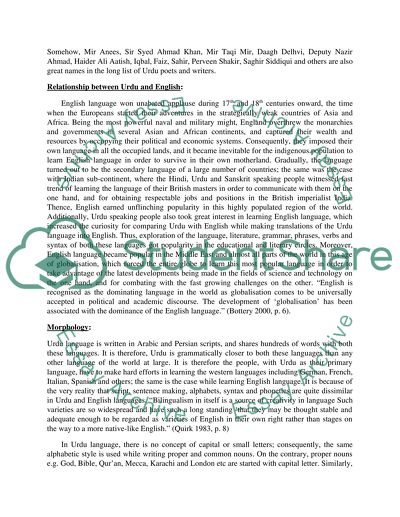Cite this document
(“Comparison between Urdu and English Essay Example | Topics and Well Written Essays - 2000 words”, n.d.)
Retrieved from https://studentshare.org/environmental-studies/1411783-comparison-between-urdu-and-english
Retrieved from https://studentshare.org/environmental-studies/1411783-comparison-between-urdu-and-english
(Comparison Between Urdu and English Essay Example | Topics and Well Written Essays - 2000 Words)
https://studentshare.org/environmental-studies/1411783-comparison-between-urdu-and-english.
https://studentshare.org/environmental-studies/1411783-comparison-between-urdu-and-english.
“Comparison Between Urdu and English Essay Example | Topics and Well Written Essays - 2000 Words”, n.d. https://studentshare.org/environmental-studies/1411783-comparison-between-urdu-and-english.


